42 when reading food labels what to look for
7 Hidden Messages In Packaged Food Labels - Eat This Not That 1 Look for high fiber and protein. Shutterstock When it comes to picking out her snacks, Michalzyck says she likes to look for higher counts of fiber and protein. "You want the snack to be giving you nutrition like protein and fiber to tie you over to the next meal and not a ton of sugar," says Michalzyck. How to read food labels | healthdirect How to read the Nutrition Information Panel. The Nutrition Information Panel tells you the size of a standard serving of the product and which nutrients are contained in that serving. You can use the label to compare the product with what's in similar packaged foods. Look out for information about: Energy: A kilojoule is a measure of energy.
Understanding Food Nutrition Labels | American Heart Association Learn what to look for on the label. 1 - Start with the serving information at the top. This will tell you the size of a single serving and the total number of servings per container (package). 2 - Next, check total calories per serving and container.
When reading food labels what to look for
5 Things You Should Always Look for on a Food Label Always take a close look at the sugar content of a product. Food labels now list total sugars, including natural sugars in a food product. Underneath, they list added sugars, those added to the product during processing. These include all caloric sweeteners, not just sugar. For example, honey would be included under added sugars. Food labels - NHS Nutrition labels are often displayed as a panel or grid on the back or side of packaging. This type of label includes information on energy (kJ/kcal), fat, saturates (saturated fat), carbohydrate, sugars, protein and salt. It may also provide additional information on certain nutrients, such as fibre. Apply These 7 Steps When Reading Food Labels Learn more here about the true meaning behind some of today's most popular health claims. Step 3: Know Your Calories by Single AND Total Servings. When looking at a nutrition label, it's very easy to assume a product is healthy if it says "100 calories per serving". But remember, NOT all calories are created equal.
When reading food labels what to look for. The Importance of Reading the Food Label and Nutritional Facts Reading food labels makes a big difference when it comes to your family's health. It ensures that you are purchasing foods that don't have unnecessary sugar, sodium, fat or ingredients that aren't beneficial to our bodies. So it's not only important to read food labels, but to know how to read them so you can decipher what it all means. How To Read Food and Beverage Labels | National Institute on Aging There are three types of product dates commonly printed on packaged foods and beverages: "Sell by" tells how long the manufacturer suggests that a store should sell items such as meat, poultry, eggs, or milk products. Make sure you buy by this date. "Use by" tells how long items will be at peak quality. Learning To Read Labels :: Diabetes Education Online Let's practice with this example label. The serving size listed is 3 pieces (or 90 grams if you are weighing the product). The grams of total carbohydrate per serving is 30 grams. If you eat 6 pieces, that is two servings. You would be getting 60 grams of total carbohydrate (1 serving = 30 grams of total carbohydrate, 2 servings = 60 grams of ... Your Clean Eating Guide to Reading Food Labels at the Grocery Store A chocolate bar may say 10 grams of sugar per serving, but a serving may be only 4 squares of chocolate out of a 16 square bar. If you were to eat the full bar of chocolate (some of us have been known to do that) you'd be looking at 40 grams of sugar in one sitting! 4. Check Calorie Count. When you've adopted a Clean Eating lifestyle ...
5 tips for decoding food labels - Harvard Health Look for fat: the good, the bad, and the really bad. Check the saturated fat and trans fat content of the food. For a general healthful diet, keep saturated fat and cholesterol low and avoid trans fats altogether. Look for foods that have 0 grams (g) of trans fat and are lowest in saturated fat and cholesterol. Food Labels | CDC If you eat the whole thing, you are eating 8 times the amount of calories, carbs, fat, etc., shown on the label. Total Carbohydrate shows you types of carbs in the food, including sugar and fiber. Choose foods with more fiber, vitamins, and minerals. Choose foods with lower calories, saturated fat, sodium, and added sugars. Avoid trans fat. How to understand food labels - Eat For Health The Nutrition Information Panel on a food label offers the simplest and easiest way to choose foods with less saturated fat, salt (sodium), added sugars and kilojoules, and more fibre. It can also be used to decide how large one serve of a food group choice or discretionary food would be and whether it's worth the kilojoules. Food Labels 101: Understanding the Nutrition Facts Label Nutrition labels can be a great tool for managing a heart healthy diet, which makes it very important that you understand what you're looking at when you read a label. Nutrition labels are based on a daily 2,000 calorie diet. Depending on your age, gender and activity level, you may need to consume more or less than 2,000 calories per day, so ...
Reading Food Labels - How to Find the Healthiest Bread If you make a sandwich and eat 2 slices, you are eating 2 servings. That is 2 times the amount of calories, fats, sugars, carbohydrates and other items listed on the label. The next section on a food label includes calories and calories from fat. Most people mistakenly only look at this section to determine the nutritional value of a food product. How to Understand and Use the Nutrition Facts Label | FDA When looking at the Nutrition Facts label, first take a look at the number of servings in the package (servings per container) and the serving size. Serving sizes are standardized to make it easier... How to Read Food Labels Without Being Tricked - Healthline A good rule of thumb is to scan the first three ingredients, as they make up the largest part of what you're eating. If the first ingredients include refined grains, a type of sugar, or... Food label reading guide | Nutrition Australia What to look for when reading food and drink labels (per 100g) Health Star Ratings The Health Star Rating is a front of pack labelling scheme which can be used to make healthier food choices at a glance. The rating range is from ½ - 5 stars and the more stars, the healthier the choice. Recommended minimum star ratings for food and drink categories
How to Read a Food Label - FoodAllergy.org Make a habit of carefully reading labels to ensure you avoid any potential allergens. "May Contain" Statements You may also notice other precautionary language on food labels. These include statements such as "may contain," "processed in facility that also processes" or "made on equipment with." These warnings often follow the ingredients list.
How to Read Food Labels for a Heart-Healthy Diet But simply reading a label isn't enough. It's important for you to know how to interpret the words and terms in order to consume a diet that will benefit your heart and overall health. See how well you can decode a food label: Question 1 of 5 What's the most important number on a food label? Calories Total fat Servings per container Sodium
Food Labels: Fat & Cholesterol | Home & Garden Information Center When comparing food labels, combine the grams (g) of saturated fat and trans fat, then choose the food with the lower combined amount. Look for the lowest % Daily Value for cholesterol, also. Ingredients List: When a food is made with more than one ingredient, an ingredients list is required on the label.
What Should I Look for When I Read Nutrition Labels? Here's your quick list to determine if the label you're reading passes the PLANTSTRONG sniff test. 1) Sodium: Your recommended total daily intake should be around 1500-2000mg daily so when reading a label, you want the number of calories per serving to be equal to or lesser than the number of milligrams of sodium per serving.
Reading Food Labels | ADA - American Diabetes Association Put food labels to work The Nutrition Facts labels on foods are really the key to making the best choices. We'll cover the basics so that these labels make shopping easier for you. Get started Understanding Carbs You've heard it all. From carb-free to low-carb, to whole and empty carbs, it's hard to know what it all means. Learn more
Reading the 'Other' Food Labels Farmed: This term is used to describe fish that are commercially bred and raised in an enclosed pen, tank, or other space. Also known as aquaculture, farmed fish may be less nutritious (i.e ...
What to Look for When Reading Food Labels | Quaker Oats Note: To read the information about each section of the food label, place your mouse over the section you wish to read about. The information about that specific section will appear in this area. If you accidentally move your mouse from the section you were reading about, simply return your mouse to the same location. Vanishing Oatmeal
Reading food labels: Tips if you have diabetes - Mayo Clinic Look for foods with fats, cholesterol and sodium on the low end of the Daily Value; keep fiber, vitamins and minerals on the high end. If your doctor or registered dietitian recommends more or less than 2,000 calories a day, you may need to adjust the percentage accordingly — or simply use the percentage as a general frame of reference.
Easy Guide to Understanding Food Labels When You Have High ... - MyDoc Ideally, best to get 0 grams of this per day. Keep in mind that manufacturers can list their products as 0 grams if it has less than 0.5 grams of trans fat per serving. This means that your food may contain trans-fat even if the food label says 0 gram. Therefore it's important to check the ingredient list (more on this later).
How To Understand And Use The Nutrition Facts Label Here's a step-by-step guide to understanding and calculating the nutrition facts label. 1. Look at the serving size. This is the first thing you should always look at on the nutrition facts label. ... Here's a guide to reading the Nutrition Facts label: Serving size: This is the amount of the food or drink that is typically consumed in one ...
Apply These 7 Steps When Reading Food Labels Learn more here about the true meaning behind some of today's most popular health claims. Step 3: Know Your Calories by Single AND Total Servings. When looking at a nutrition label, it's very easy to assume a product is healthy if it says "100 calories per serving". But remember, NOT all calories are created equal.
Food labels - NHS Nutrition labels are often displayed as a panel or grid on the back or side of packaging. This type of label includes information on energy (kJ/kcal), fat, saturates (saturated fat), carbohydrate, sugars, protein and salt. It may also provide additional information on certain nutrients, such as fibre.
5 Things You Should Always Look for on a Food Label Always take a close look at the sugar content of a product. Food labels now list total sugars, including natural sugars in a food product. Underneath, they list added sugars, those added to the product during processing. These include all caloric sweeteners, not just sugar. For example, honey would be included under added sugars.



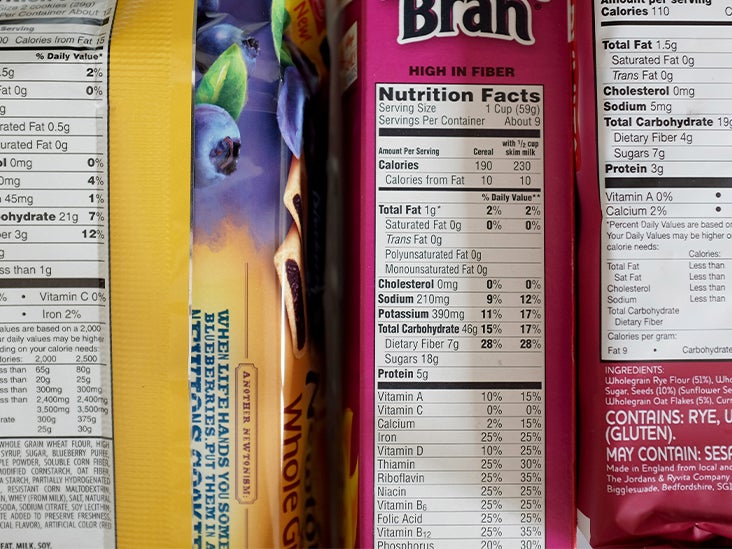
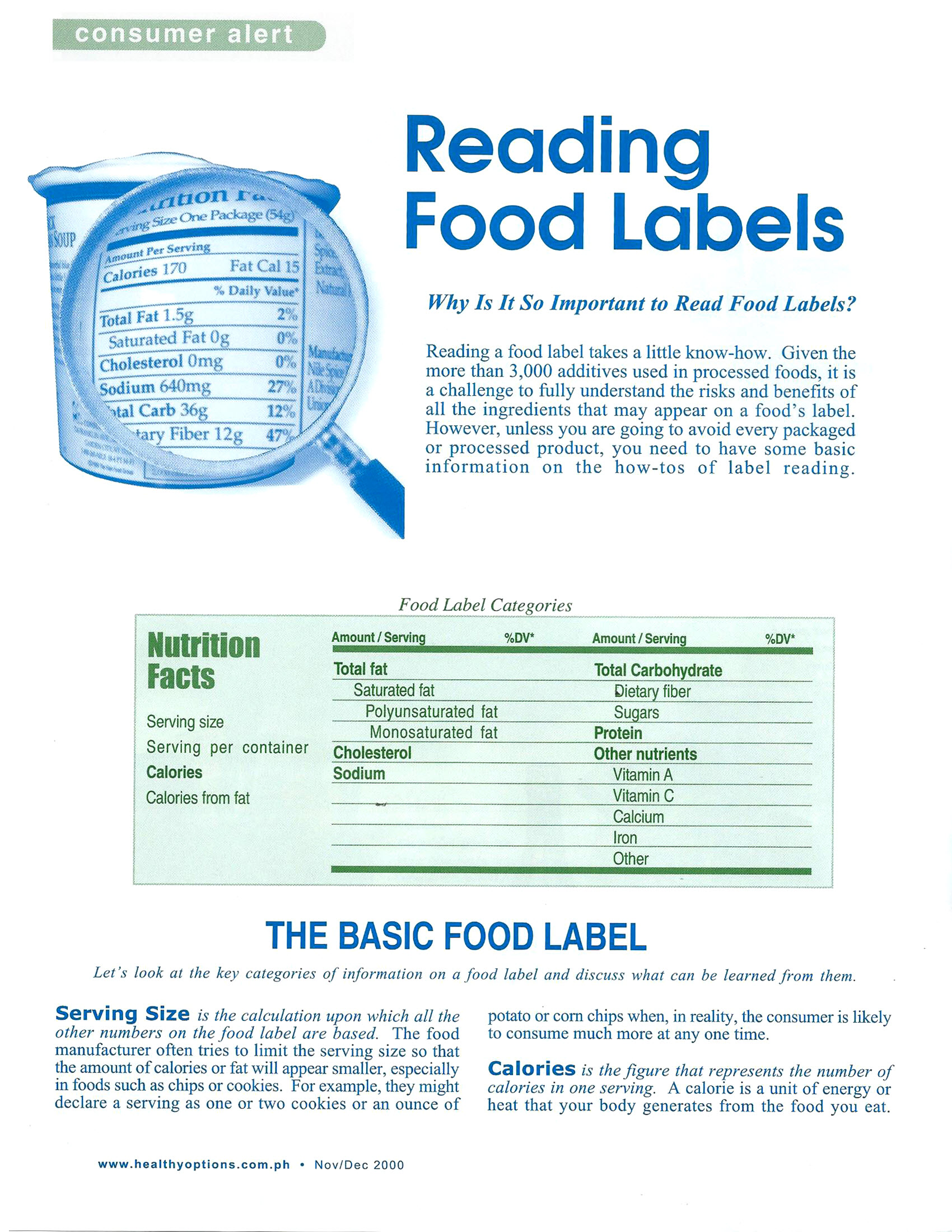
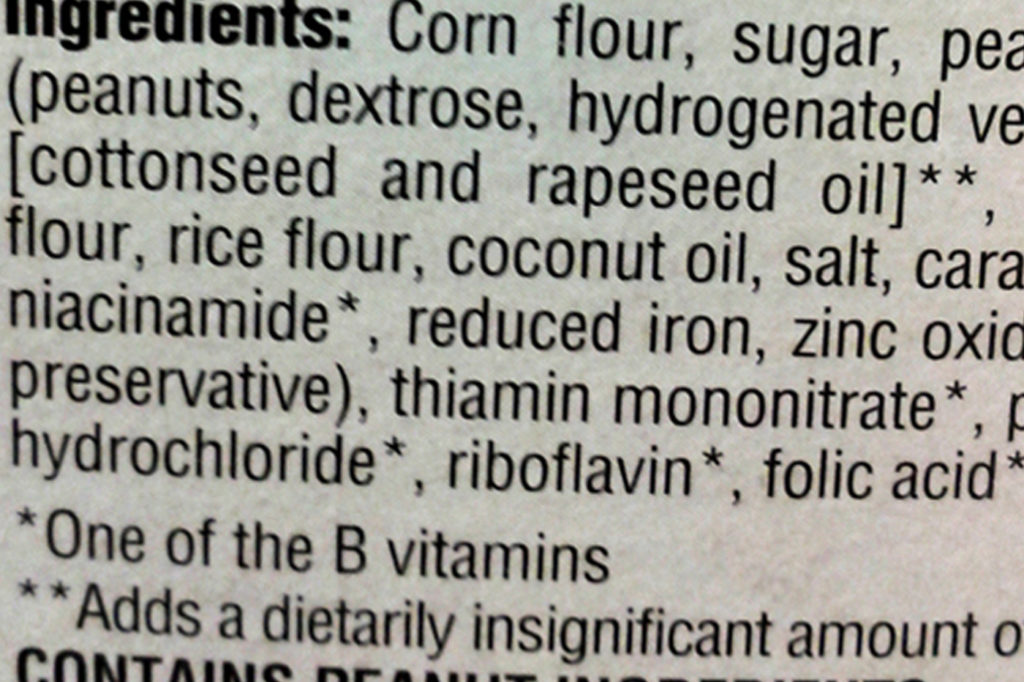
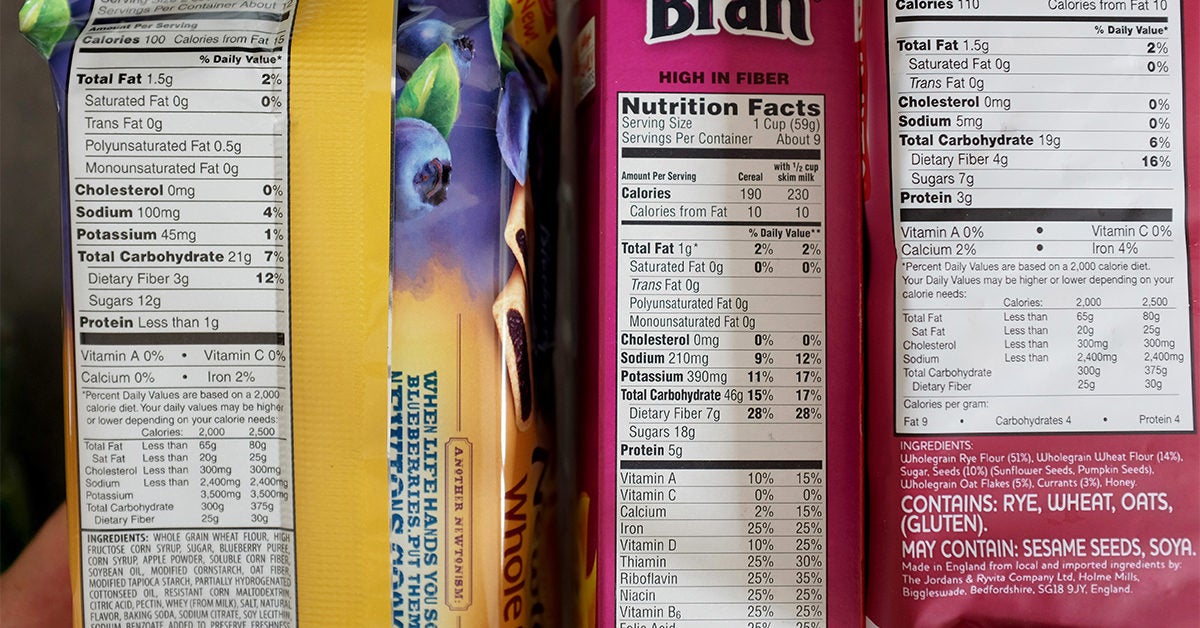



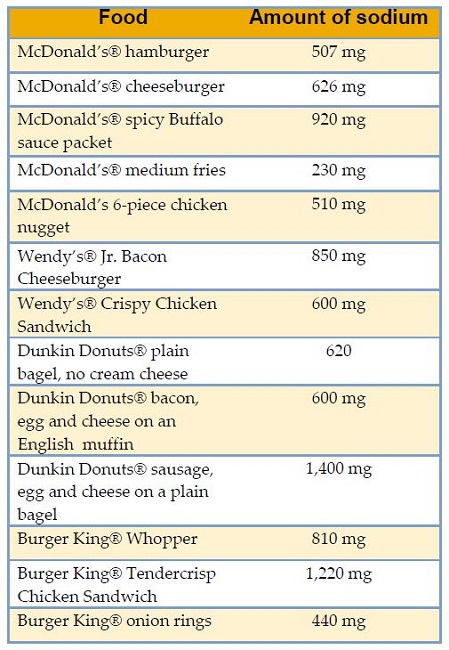
Post a Comment for "42 when reading food labels what to look for"